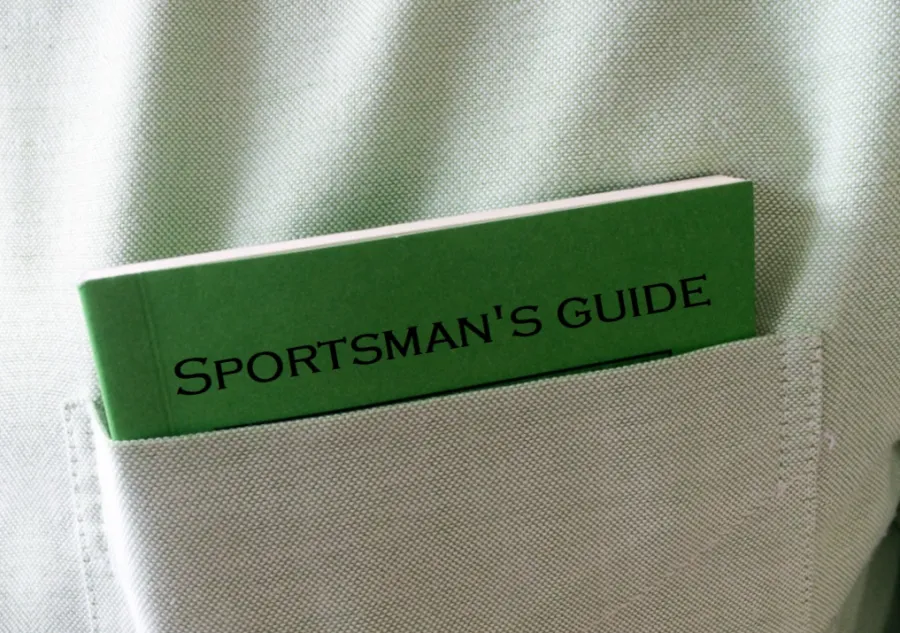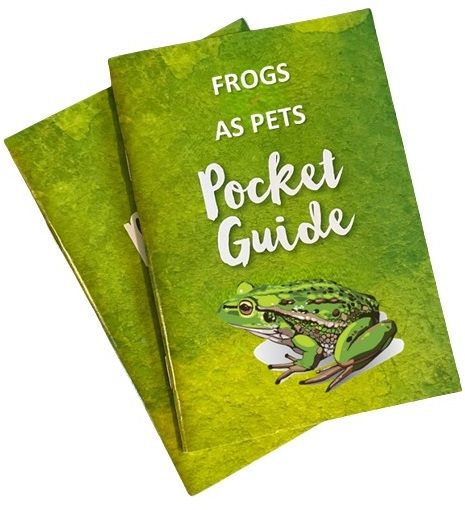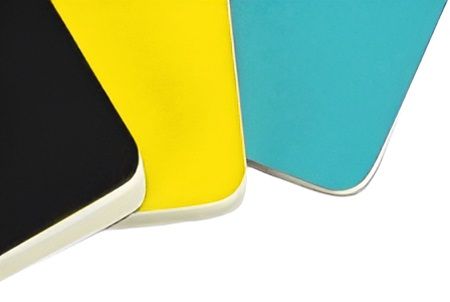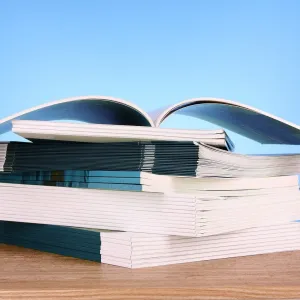Pocket Size Book Printing: 9 Ways to Improve your Small Book

estimated reading time: 6 minutes
What are Pocket Size Books?
Pocket Size Books are smaller, more portable versions of printed
books. The smaller size allows these books to fit conveniently into a pocket or
handbag, making them very easy to transport while also keeping them readily
accessible.
What are the Dimensions of a Pocket Size Book?
The size of a pocket book can vary but they generally have
dimensions of 4" x 6" or smaller, including the popular sizes of 3.5" x 5" and 3"
x 4". Just about any genre of book - from fiction to poetry to reference
material - can be created in a compact size.

Tips for Improving the Function, Readability, and Longevity of Pocket Size Books…
Below are some suggestions to consider implementing during
the design and production phases of your pocket size book project…
1. Make sure your chosen book dimensions will actually fit in a pocket
If your book is intended to be carried around in a pocket,
it is important to realize that pockets come in all sizes. For example, the
breast pockets of shirts will generally be proportionate to the shirt size. As
such, the pockets on many shirts, particularly shirts of a smaller size, might
not be able to accommodate a 4" x 6" book. However, a book size of 3.5" x 5" or
3" x 4" will fit neatly into the breast pocket of most adult shirts. If you
foresee your book being kept in a hip pocket or coat pocket, the 4" x 6" size
should be okay because those pockets are generally wider.
2. Choose a softcover binding style
Compared to hardcover books, books bound with a soft cover
are lighter in weight. Hence, softcover books are easier to carry around in a
pocket or purse. Softcover books are also more pliable, allowing a book placed
in a pocket to bend and flex slightly as the person moves about. The most
popular softcover binding methods include perfect binding, saddle stitching,
spiral coil binding, comb binding, and wire-o binding. All of these softcover binding
styles work well for pocket-sized book projects and are much more economical than hardcover binding.
3. Laminate the book's cover
The convenient size and portability of pocket-sized books means they are intended for frequent handling. Applying a clear laminate film to your book's cover adds a
protective layer against scratches, scuffs, creases, tears, and moisture. Made
of tough plastic, a laminate film increases the durability of the book and
allows it to stand up to repeated use. A laminate also allows the book to be
wiped clean without harming the ink or underlying substrate.
4. Round the corners of the book's cover and pages
Pocket-sized books that will frequently be placed into a
pocket or purse will benefit from having the corners of the book rounded off. Standard
square corners have a tendency to catch or snag, especially on fabric. Hence, rounded
corners will allow the book to slide more easily into a pocket or purse while helping to prevent the corners of the cover and pages from becoming bent and dog-eared.
5. If using index tabs, consider an oversized cover to protect them
If you plan to use die-cut index tabs to help users navigate
your book's content, consider making the cover of the book slightly larger so
that it protects the tab extensions. Whether the tabs are positioned along the side
of the book or at the bottom, extending the cover over the tabs will help prevent them from becoming bent and prematurely worn. Incidentally, index
tabs work best when used in conjunction with spiral coil binding, comb binding,
or wire-o binding.

6. Keep the fonts at a readable size
Even though the physical dimensions of a pocket size book are
on the smaller side, the font used for the text copy still needs to be at a
readable size. For this reason, try to use a font size between 9 and 11
points. Also, sans serif fonts are usually easier to read than serif fonts when
a smaller text size is used. Sans serif fonts, such as Arial or Helvetica, do
not have additional strokes (serifs) at the ends of the letters. As a result,
sans serif fonts, with their clean lines and uniform thickness, are better
suited for smaller print. Serif fonts, such as Times New Roman or Courier, can
vary in thickness with the thinner sections of the font becoming hard to see
when the text is small.
7. Use appropriate page margins
Margins provide white space around the perimeter of a book's
pages. In addition to providing an area for the fingers to grip the pages without
obstructing any of the printed content, margins also enhance the reading experience
by giving the pages a visually appealing symmetry. Though the margins of many standard
sized books might be 1" or more, wide margins on a pocket size book would occupy
too much of the page space and thus limit the room available for text and
images. Also, to achieve a sense of balance, it is important that the margins for
smaller books be relatively narrow so they remain in proportion to the overall
book size. As such, a good rule of thumb for pocket size books is to use page margins
within the 3/8" to 1/2" range.
8. When creating the written content, aim for conciseness
Pocket sized books are purposely kept small for the sake of convenience
and portability. Consequently, the compact format is not particularly suited for
sharing lengthy content. This is why it is important that the writing be concise,
focusing on essential information only. Try to avoid using lengthy paragraphs
and dense blocks of text. If possible, break up the written content with
headings and use shorter paragraphs. Incorporating bullet points, where
applicable, is also a good way to present important information in a succinct and easy to comprehend manner.
9. Make sure illustrations are clear and simple
Since the pages of pocket size books do not offer a lot of
space to print on, any photos or illustrations included in the book will have
to be relatively small. The smaller the image, the less detail it will be able
to convey. This is why any images used in pocket size books should be clear and
straightforward. Line drawings are a particularly good choice for pocket-sized books
because they are simple and offer good contrast.

What types of Books are generally created in a Pocket Size Format?
Just about any type of book can be created in a condensed and
portable size. Since pocket sized books are so easy to carry around, this format it
is especially popular for field guides, travel and sightseeing books, foreign
language translations, and other books taken along when out exploring the world.
Crossword, Sudoku, and other puzzle books are commonly
created in a smaller hand-held size as are certain instructional books that might be used
on the go. In addition, calendars, date books, and even journals are commonly
made in pocket size versions.
Also, since pocket books are so lightweight and compact in
size, it is easy to keep them handy for quick reference. This makes them
particularly well-suited for first aid instructions, lists of medications, disease
symptoms, and other health related topics. Along these same lines, pocket sized
books are also perfect for conveying safety protocols such as dealing with
fires, earthquakes, and other emergencies in the workplace or home.
Furthermore, pocket books are extremely popular for religious texts,
prayer books, scripture, and other inspirational content. The convenient size
of pocket books is also why they are used extensively for formulas, terms, codes, conversions,
rules and regulations, and other technical information that is referenced in various
industries, such as for legal, electronic, or mechanical activities.
Be sure to get a Quote from Color Vision for your next Pocket-Sized Book Project!
Color Vision has been a printer of affordable books and
booklets for over four decades. We print all sizes of books, from pocketsize to
oversize. Plus, we offer a wide section of binding styles and finishing options
to meet your specific needs.
If you have any questions, or have an upcoming print project
you would like to discuss, just give us a call at 800-543-6299.
Or, if you already know your project's specifications and
would like a quote, please complete our Quote Request form and we
will be happy to email a quote to you.
As always, we hope to hear from you soon and look forward to
assisting with your next print project!
Related Articles

Printing Booklets: 5 Popular Types of Binding for Booklets
Read This Article

Short Run Book Printing: The Gateway to Self-Publishing
Read This Article

Perfect Bound Books: Exploring the Perfect Binding Process
Read This Article

Custom Book Printing: What is PUR Binding?
Read This Article